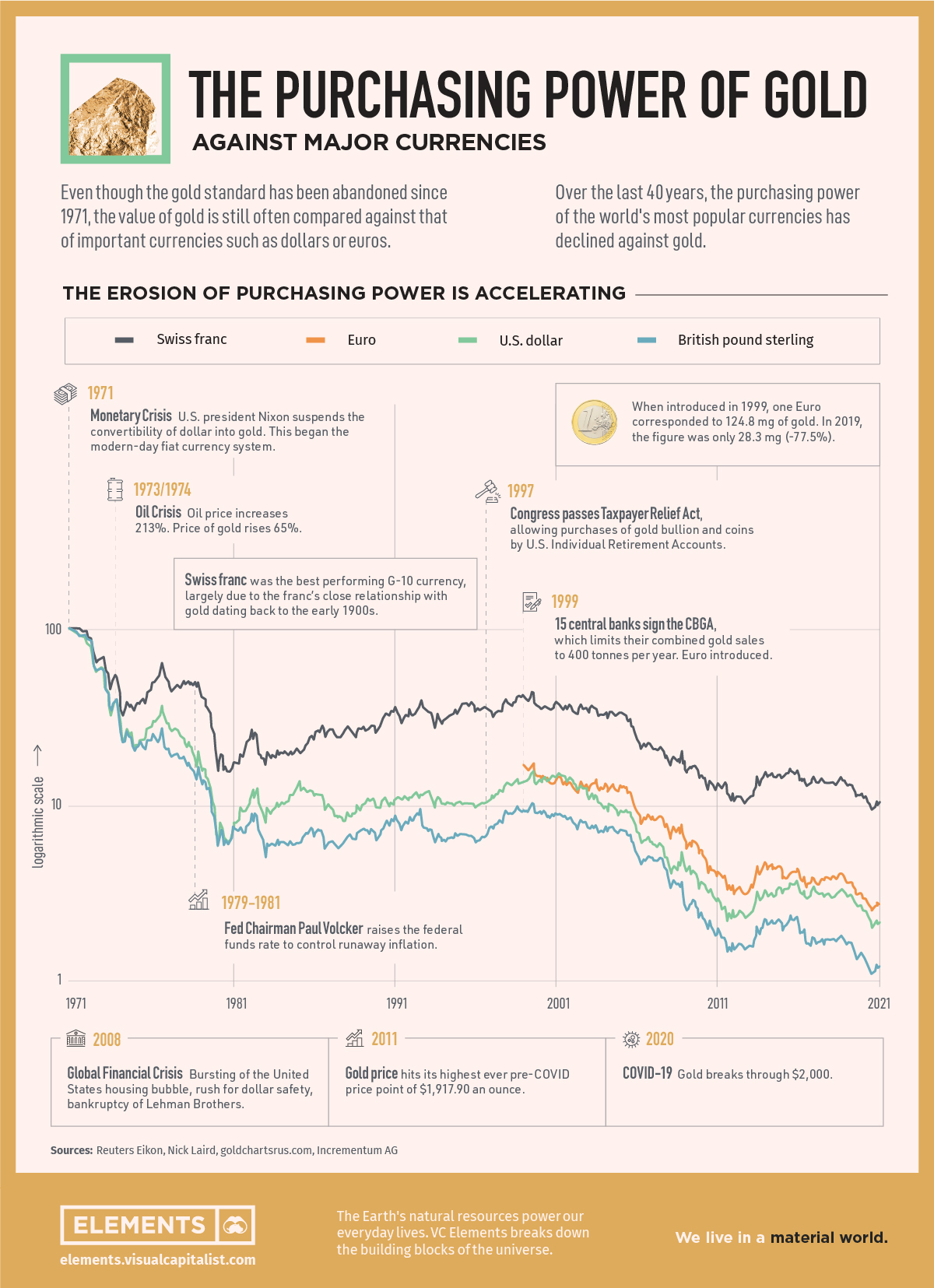Visualizing the power of gold versus currencies

The Power of Gold Versus Currencies
Since the gold standard was abandoned in 1971, the relationship in value between currencies and gold has moved in only one direction: down.
At that time, U.S. President Richard Nixon suspended the convertibility of the dollar into gold, effectively bringing the Bretton Woods system to an end.
Today’s visualization comes from the In Gold We Trust report, and it shows that over the last 40 years, the purchasing power of the world’s most popular currencies have declined significantly against the precious metal.
Turbulent Years
In the first decade after the gold standard was abandoned, the international monetary system was seriously shaken. Several U.S. recessions, coupled with international conflicts and high price inflation put the world’s reserve currency under enormous pressure.
During the 1973-74 oil crisis the price of gold rose 65%. In 1978, U.S. bonds had to be issued in the hard currencies of the Swiss franc and the German mark–the so-called Carter bonds.
The next decade saw the rehabilitation of the dollar through a highly restrictive monetary policy run by the Federal Reserve that led to sky-high interest rates. The trend continued with the fall of the communist Eastern Bloc in the early 1990s.
The Erosion of Purchasing Power is Accelerating
Gold is still the universal reserve asset to which central banks, investors, and private individuals return in times of crisis. Since 1971, the average annual growth rate of the metal price in U.S. dollars is just over 10%. Since the Euro was introduced in 1999, the gold price in EUR has risen by 356%, or on average 7.8% per year.
Unsurprisingly, over the last 40 years, the best performing G-10 currency was the Swiss franc, largely due to its close relationship with gold. The Swiss National Bank has one of the largest reserves worldwide.

Despite significant corrections, gold was able to outperform virtually every other asset class and above all, every other currency between 2001 and 2019.
Gold breakout
Amid the turmoil brought about by Covid-19, investors again increased their exposure to gold. In August, the metal price surpassed $2,000 per ounce for the first time ever.
As political and economic tensions tend to endure over the next decades, so does gold’s role as an anchor during uncertain times.
This article first appeared in the Visual Capitalist Elements)
More News
{{ commodity.name }}
{{ post.title }}
{{ post.date }}



Comments